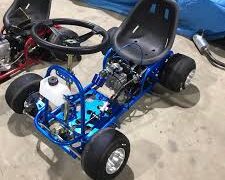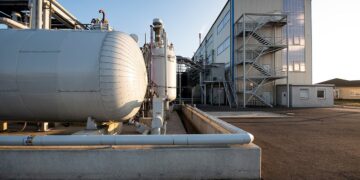The Everest Base Camp Trek (EBC) is one of the most iconic and sought-after trekking experiences in the world. With its breathtaking views of the world’s highest peak and the rich cultural experiences along the way, it’s essential to plan your trek during the optimal time to make the most of your adventure. Here’s a detailed guide on the best times to undertake the Everest Base Camp Trek and what to expect during each season.
1. Pre-Monsoon (Spring) – March to May
Why It’s the Best Time:
- Weather: Spring is the most popular time for trekking to Everest Base Camp. The weather is relatively stable, with clear skies and moderate temperatures, making it ideal for trekking.
- Views: The visibility is excellent, providing breathtaking views of the Himalayan peaks, including Everest, Lhotse, and Nuptse.
- Temperature: Daytime temperatures range from 10°C to 20°C (50°F to 68°F) at lower altitudes, while nights are cold but manageable. As you approach higher altitudes, temperatures drop significantly, so proper gear is essential.
- Flora: The spring season is marked by blooming rhododendrons and other wildflowers, adding vibrant colors to the trek.
Challenges:
- Crowds: Since it’s the peak season, you’ll encounter more trekkers, which can lead to busier trails and lodges.
Preparation Tips:
- Book Early: To secure accommodations and permits, book your trek well in advance.
- Gear: Ensure you have appropriate gear for varying temperatures and possible snow.
2. Post-Monsoon (Autumn) – September to November
Why It’s a Great Time:
- Weather: Autumn offers stable weather conditions with clear skies and lower chances of rain. This season provides fantastic visibility for mountain views.
- Temperature: Temperatures are similar to spring, with daytime temperatures ranging from 5°C to 15°C (41°F to 59°F) at lower altitudes. Nights become colder as you go higher.
- Crowds: Although there are fewer trekkers compared to spring, the trails are still moderately busy, which can be a pleasant experience.
Challenges:
- Weather Variability: Early autumn may still experience some residual monsoon effects, including occasional showers. Late autumn can bring colder temperatures and snow, especially at higher altitudes.
Preparation Tips:
- Layered Clothing: Pack layered clothing to adapt to temperature changes.
- Weather Check: Monitor weather forecasts regularly for any changes in conditions.
3. Winter – December to February
Why It’s a Quiet Time:
- Crowds: Winter is the least popular time for trekking to Everest Base Camp. The trails are much quieter, offering a more solitary experience.
- Scenery: Snow-covered landscapes create a serene and picturesque setting.
Challenges:
- Extreme Cold: Winter temperatures can be extremely cold, with daytime highs often below freezing and nighttime temperatures plunging further, especially at higher altitudes. This makes trekking more challenging.
- Snow and Ice: Trails can be covered in snow and ice, making them slippery and more difficult to navigate.
- Limited Services: Some lodges and teahouses may be closed due to the low number of trekkers.
Preparation Tips:
- Specialized Gear: Invest in high-quality cold-weather gear and trekking poles for added stability.
- Safety: Be prepared for harsh conditions and potential altitude sickness. Carry extra supplies and ensure your travel insurance covers high-altitude trekking.
4. Monsoon – June to August
Why It’s the Least Favorable Time:
- Weather: The monsoon season brings heavy rains, which can lead to landslides, muddy trails, and poor visibility. The likelihood of encountering rain is high, and the weather is generally unpredictable.
- Humidity: High humidity levels make the trek more uncomfortable, and the trails can become slippery and challenging.
- Crowds: There are very few trekkers during this season, resulting in quieter trails, but also fewer services and potential disruptions.
Challenges:
- Increased Risk: The risk of landslides and flooding is higher, making the trails potentially dangerous.
- Leeches and Mosquitoes: The monsoon season attracts leeches and mosquitoes, especially in lower altitudes.
Preparation Tips:
- Rain Gear: Ensure you have high-quality rain gear and waterproof trekking boots.
- Check Conditions: Stay updated on trail conditions and weather forecasts before embarking on the trek.
Lukla Flight: A Key Component
A crucial part of the Everest Base Camp Trek is the flight from Kathmandu to Lukla, the starting point of your trek. This short but thrilling flight is often described as one of the most scenic and dramatic in the world, offering breathtaking views of the Himalayan range.
What to Expect:
- Scenic Flight: The flight from Kathmandu to Lukla takes about 30-40 minutes and offers spectacular views of the mountains. On a clear day, you can see Everest and other peaks from the plane.
- Airport: Lukla’s Tenzing-Hillary Airport is known for its challenging runway, which is short and perched on a steep incline. The airport’s unique location adds to the adventure but can be affected by weather conditions.
- Weather Conditions: The flight can be delayed or canceled due to adverse weather conditions. Cloud cover, rain, or high winds can impact flight schedules, so it’s advisable to allow for some flexibility in your itinerary.
Choosing the Best Time
Considerations for Selecting the Best Time:
- Personal Preferences: Consider your comfort with crowds, weather, and the overall trekking experience you seek.
- Fitness Level: Assess your fitness level and ability to handle extreme weather conditions if you choose to trek in winter or monsoon.
- Availability: Check availability of permits, accommodations, and flight schedules, especially if traveling during peak seasons.
Conclusion
The best time to do the Everest Base Camp Trek largely depends on your personal preferences and what you hope to experience. For the most favorable weather, clear skies, and vibrant scenery, spring (March to May) and autumn (September to November) are the ideal times. However, if you prefer a quieter trek and are prepared for colder conditions, winter (December to February) can offer a unique experience. Monsoon season (June to August) presents the most challenging conditions and is generally not recommended for trekking.
Regardless of when you choose to trek, proper preparation, good physical fitness, and the right gear are crucial for a safe and enjoyable Everest Base Camp Trek. Plan ahead, stay informed about weather conditions, and embark on this adventure to witness the majestic beauty of the Himalayas at its finest.































